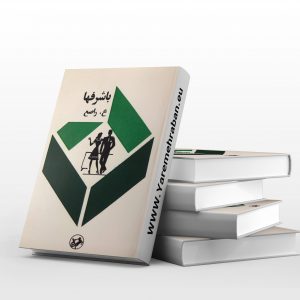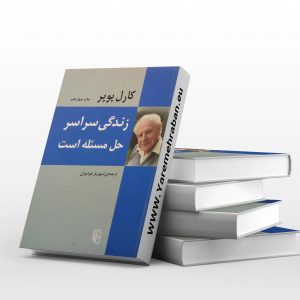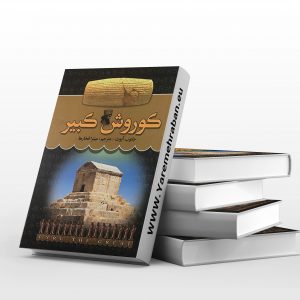Description
The Art of War is an ancient book on warfare and martial arts and war management written by Sun Tzu. Sun Tzu was one of the most famous warlords of the sixth century AD in mainland China.
About the Art of War Book
In The Art of War, Sun Tzu addresses a variety of issues, including the strong role of commander, battle formation, ways to deceive enemies, prudent attack, and identifying strengths and weaknesses. The writings and strategies of this war officer have been preserved over the years. The laws he laid down are still used in war plans and strategies. Interestingly, Sun Tzu strategies are widely used not only in war but also in business management and politics.
Many readers of The Art of War believe that this book is very useful for their business. People who like to proceed in order in their personal life and work according to order and strategy should read the summary of the book Art of War. After reading this book, you will see that your perspective on strategy and strategy building changes.
Who do we recommend the Art of War book to?
The Art of War book is appealing to people who are interested in martial arts, warfare, and martial arts-related teachings. This book is also useful for those who are interested in different management and planning methods.
About Sun Tzu
The year of birth was 544 BC. He is also known as the great thinker Confucius. Sun Tzu was a famous writer and warrior, and his famous book, The Art of War, is one of the richest books in Chinese literature. Mao Zedong and Joseph Stalin also read the book during the war. San Tzu died in 496 BC.
Part of the Art of War book
War, more than anything else, is about transforming human perceptions of war in such a way that war is seen as a real alignment between two real forces.
For example, if your enemy is close to you; But he does not take any action to attack you, know that he is stationed in his positions to wait for you to attack and defeat you in this way. If the enemy army threatens and challenges you when it is far away from you, it is actually trying to force you to move forward to become more vulnerable.
Explore and monitor your surroundings to find and understand signs of enemy action. If the birds are suddenly flying or there is movement in the forests, it means that the enemy is moving. When the enemy has sent representatives to you who speak to you gently and politely; But at the same time, in some places, his forces have moved towards you, trust the facts and objects, not the words! Because the struggle is imminent. If negotiators from a rival country propose a ceasefire while their forces are well positioned on the battlefield, it means that they intend to betray you.
In addition to managing confusion in battle and understanding the signs, you must learn to read the appearance of the enemy! Are they whispering to each other about what is going to happen? Then examine whether the commander of the enemy may have lost control of the situation and the soldiers realized this. If they are divided, this is an opportunity for you. Is the enemy army too rewarding and punitive? Offering excessive rewards and punishments to middle-ranking army officers will completely destroy their motivation and energy.
About the book Art of War
In The Art of War, Sun Tzu gives you amazing strategies for success, so you can use it whenever something in your life is worth fighting for.
The Art of War was written in China before the birth of Christ; This work is undoubtedly one of the oldest known treatises on world war history. The principles discussed by Sun Tzu in this book are advice that is still relevant from 2,400 years ago to the present and is now taught as a classic and enduring resource in marketing and advertising universities.
It should be noted that in 2000, a film called The Art of War was made, which refers to the same book. The main character of this film is a UN agent and uses his own techniques and tricks to create and maintain peace and security.
What is the subject of the book Art of War?
Rather than advising you on warfare, Tzu seeks to solve problems using the set of practical techniques it offers. In fact, the art of war goes beyond the metaphor of the word “war.” This word is just a sign of any problem that human beings face in life. Because we have not all achieved anything in our continuous lives, so it is better to learn the strategy of playing with it by reading this book in advance.
One of the most fundamental issues that Tzu addresses in his book is: “If you know yourself and your enemies, you do not worry about the outcome of the war, but if you only know yourself and do not know your enemy properly, you will suffer defeat for every victory.” You also have to endure. It should also be noted that according to the teachings of Sun Tzu, a victorious general would do a lot of calculations before the start of the war, and a losing general would do a little calculations before the start of a war. So, the more calculations, the better!
Learn more about Sun Tzu:
Sun Tzu is a Chinese commander who lived during the reign of Wu, five hundred years BC. .
In a part of the book Art of War, we read:
Japanese tradition is that Sun Tzu’s “Thirteen Seasons” first lived in China twice (from 716 to 735 and after 752 to 754 AD) by the new Kibi, and after 19 years. The Absence has returned to Japan with some of the classic Chinese texts. Shoku Nihongi Shoku Nihongi (Appendix to Japanese Yearbooks) contains quotations from Chinese political and historical documents, including several excerpts from Sun Tzu’s “Art of War.” According to this source, Kibi New Maccabi used Sun Tzu as a manual training manual for Japanese warriors before 760 AD.
However, since the Japanese have been very familiar with classical Chinese literature since time immemorial, we can assume that they were also familiar with works of martial arts in China from the same period.
The seventeenth book of Nihongi, which describes the reign of the Keitai emperor, tells the story of a Chinese sage who knew the “Five Classics” and entered Japan via Korea in 516 AD.
From that date on, there were regular cultural ties between Japan and the Pachke dynasty in Korea, which was completely “Chineseized.” In fact, Sansom explains that relations with China “were fully established” during the first century AD, that is, in the late Han Dynasty; And several political delegations were sent from Japan to the Chinese Viceroyalty of Korea between 238 and 247 AD. The common goal of all these delegations was to get acquainted with Chinese civilization and technology. The Japanese were as curious men then as they are today; And so, the first Japanese travelers, on their return to their homeland, brought with them not only various manuscripts, but also valuable and useful art objects.
War Art Book Review
Ancient Chinese civilization is one of the most mysterious human civilizations. The people of ancient China have rituals and practices that have been passed down through the centuries and even today they look amazing. One of the most fascinating remnants of this civilization, dating back more than 2,500 years, is a valuable book attributed to Sanzhou, the great commander of Chinese history. The Art of War is a much larger book than its time. A book that can be a valuable guide, not only in the struggle but also in the life of every human being.
The art of war; A book beyond history
The art of war is the Chinese command of Sonzu, the Chinese commander of the Wu dynasty, five hundred years BC. The art of war was returned to France in 1772 and published as Art Militaire de chinois. This translation is the first European translation of the art of war. Lionel Giles, an English writer and historian specializing in Chinese history, translated the book into English in 1910. The title of the English translation of the book is “the art of war”.
Art of War was one of the top 7 strategy books in ancient China. The book is said to have attracted the attention of many warlords and commanders over the past 200 years. The book was co-read by Soviet dictator Joseph Stalin and Mao Zedong, the first ruler of the People’s Republic of China. The book Art of War is written in thirteen sections, which are as follows:
1- Designing a map 2- Starting a war 3- Planning wisely 4- Tactical arrangement 5- Energy 6- Weaknesses and strengths 7- Exercises 8- Types of tactics 9- Starting an army 10- Natural features of the earth
11- Different types of land 12- Attack with fire 13- Use of spies
According to Sanzo, the most basic art of war is that “war is based on deception.” “The highest art in war is to defeat the enemy without a fight,” he believed. Sanzo’s book is full of unique points that will come in handy not only in war but in all of life. One of the key issues he addresses in his book is: “If you know yourself and your enemies, you will not worry about the outcome of hundreds of wars, but if you only know yourself and do not know your enemy, you will get every “Victory will endure the pain of defeat.”
About Sun Tzu; Amazing command
Sun tzu is the commander of the Chinese warrior and one of the greatest strategists of antiquity. His birth name was Suwon Wu and he later became known as Sanzhou. He was born in 544 BC and died at the age of 48. Of course, there are differences of opinion on these dates. The period we are talking about is called “Autumn and Spring” in Chinese history. This period began in 771 BC and lasted until 476 BC. One of the things that makes the difference in his life is that there is no mention of Sanzo in the commentary of zuo, which is written in the history of autumn and spring.
One of the most famous stories about Sanzo is from before he was drafted into the army. According to the story, King Helo, the king of Wu at the time, asked him to give military training to 360 of his concubines to test Sanzo. Sanzhou divided the women into two factions, appointing two of the king’s favorite wives as commanders of each faction.
At first he ordered the women to turn right but they laughed. Sanzo said the commander in charge was that the soldiers did not understand the order correctly. He repeated the order and the women laughed again. At this time, Sanzo ordered the execution of two of the king’s favorite women who had been chosen as commanders, explaining that when the soldiers understood the commander’s command but did not obey it, it was their responsibility. When these women were killed, two more women were put in command, but this time the women obeyed the orders well.
The “Bing Sheng” series, made in China in 2008, tells the life story of Sun Tzu. The series has 40 episodes and its theme is fighting and the power of Sanzo’s leadership.
Art War and the stock market
Art of War is a very powerful strategy book. Although initially used only as a battle strategy, over time the book found other uses and was used in a variety of contexts. One of the most famous uses of martial arts is its use in the stock market.
Salman Amin, a young Iranian writer, wrote the book “The Art of War in the Stock Market” in 1995, based on the art of San Tzu. In this book, he tries to compare the principles of investment and market conditions with the battlefield and uses Sun Tzu’s tips for market success. For example, he equates the capital one has with the ammunition dump on the battlefield and continues to make comparisons and analyzes based on it.
Documentary the art of war
Based on the 90-minute documentary Art War Book, made in 2009. This documentary shows some of the basics of the Art of War book. Experts believe that many modern-day wars can be explained and even predicted by comparing them to the principles of warfare set forth in The Sun Tzu. This documentary is dubbed in Persian. You can also download this documentary from internal sites and enjoy it.
The Art of War in Hollywood
In 2000, a film called Art of War was made in Hollywood, directed by Christine Dougie. The title of this film refers to Sanzo’s book of art. The protagonist of the film, played by Wesley Snape, is a UN agent named Neil Shaw, who uses his own quasi-moral methods to create and maintain peace.
He must protect the forum in which a trade agreement between the United States and China is being formed. At the same meeting, the Chinese ambassador to the United Nations, Wu, is killed. “Neil Shaw” is an agent to identify the killer, but he also gets involved with criminals …
The Art of War movie has two other parts. The second part of the movie “Artist: Betrayal” was released in 2008 and the third and last part of “Artist: Punishment” was released in 2009.
The Art of War Translated into Persian, from Mohammad Hadi Moazen Jamei to Mohammad Javad Nemati
The book The Art of War in Iran has been translated over and over again, and various publications have published it in various forms, from summary to full text. Dr. Hassan Habibi, an Iranian politician and a graduate of the Sorbonne University in France, first translated the art of war into Persian in 1980. This translation was published by Ghalam Publications in those years. Many translations of this book were made after that. For example, Dr. Mohammad Hadi Moazen Jamei translated this book in 1989 and published it in Shahr Publications. Dr. Mehdi Samsar’s translation of this book is also available in the Iranian book market and is published by Jami Publications. Mahmoud Hamidkhani has also published this book in collaboration with Sita Publications.
In a part of the art we read Sanzo
Exercise
1- Sun Tzu says: In war, the commander takes his orders from the ruler.
2- Once the IRGC has gathered and concentrated its forces, it must combine different factors before setting up its camp.
3. Then comes the tactical exercise, which is no more difficult. The difficulty of tactical exercises is due to the misguided becoming the main route and the bad luck to good luck.
4- Hence, in taking a long and tortuous path, after misleading the enemy and moving away from his path, plotting to achieve the goal before him, even if we have moved after him, shows the art. It is deception.
5- Exercise is useful for any army. But with a chaotic group, it is the most dangerous thing.
6- If you equip a full army, you can take advantage of a certain privilege, it is possible that you will achieve this privilege too late. On the other hand, sending a vanguard group to achieve this goal can lead to the sacrifice of food and energy.
7- So if you instruct your men to prepare for a battle, and force them day and night to stop twice the usual distance of a route, or to travel a long distance to gain a point over the enemy, Rest assured that all these groups will be captured by the enemy.
1- Introducing the book on YouTube
2- Introducing the book in Aparat














Reviews
There are no reviews yet.